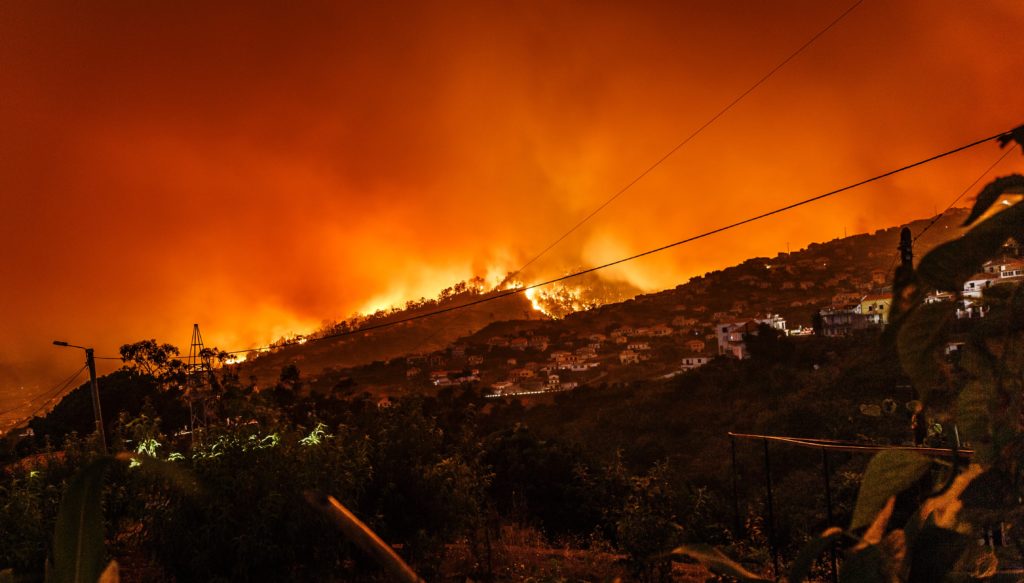Droughts, bushfires and floods may be part of Australia’s history but it’s economic research that’s preparing for the future.
In 1904, poet Dorothea Mackellar wrote about Australia as land of harsh contrasts: a sunburnt country with droughts, flooding rains, and a ‘pitiless blue sky’ under which cattle die.
Australia is no stranger to extreme weather events – blistering heat, devastating bushfires, catastrophic floods and unforgiving droughts.
More than a century on, Mackellar’s now-iconic anthem sounds familiar: in the summer of 2019 – as the nation mourned the catastrophic losses of the 1983 Ash Wednesday and 2009 Black Saturday bushfires – 1.4 metres of rain was dumped on Townsville while bushfires ripped their way through Tasmania.

Floods vs bushfires
Deakin Business School’s Professor Mehmet Ulubasoglu specialises in research about natural disasters and the long-term impact on the economy.
Over the past five years he’s been working with the Australian Government’s Bushfire and Natural Hazards Cooperative Research Centre (BNHCRC) investigating how extreme weather events such as bushfires, storms and floods affect a wide range of sectors.
In a recently-accepted paper Floods, Bushfires and Sectoral Economic Output in Australia, 1978–2014 by The Economic Record (published by the Economic Society of Australia), findings from his research now reveal that floods are likely to have a greater long-term negative impact on the Australian economy than bushfires.
Working with several co-authors, Prof. Ulubasoglu analysed economic data from each Australian state and territory from 1978 to 2014 while also gathering information on the timing and location of 36 major fires and 47 major floods.
By exploring how natural disasters affect the prices of goods and services across a range of areas, their findings revealed that floods produced the most adverse (and persistent) impact on the agriculture, mining, construction and financial services sectors.
‘For example, our estimates indicate that a state that experienced a flood in a given year encountered, on average, five to six per cent lower agricultural output in both that year and the following year, compared to another state with no such flood experience. Sectoral responses to bushfires are more nuanced,’ says Prof. Ulubasoglu.
Counting the cost
The research suggests that Australia lost two years’ worth of agricultural output during the period 1978 to 2014 but that other sectors also declined: for example mining output slumped because of the amount of time it took to pump out flooded mine zones.
Interestingly the research also found that bushfires had little impact on agricultural output.
‘One explanation is that bushfires are mostly concentrated in the months of January and February during which the crop harvesting, for example, is almost over,’ says Prof. Ulubasoglu.
And yes, while there was a price impact it seems the rise was only temporary.
‘For instance, a surge in food, health and transportation costs occurred following the disasters with a decline in rent, housing and recreation prices. If state-wide food prices were to rise by an average of 0.59 per cent in the quarter of a disaster episode, this would raise the overall inflation of the same quarter by up to 0.1 per cent. However, the effects would be transitory, and taper off as the disaster effects unwind,’ he explains.
The researchers also expected the tourism sector to be impacted, but Prof Ulubasoglu says government policies to promote the affected areas appear to have had a positive effect.
‘Of course, there might be other intangible damages, such as on environmental and mental health, whose adverse economic impacts may appear in the long-term,’ he adds.

Ongoing economic impact
While it’s well-known that catastrophic events such as floods and bushfires have an immense impact on the economy and lives of people living in affected areas, Prof. Ulubasoglu says the ongoing economic impact is less understood.
‘In 2010-11 alone, the cost of damage and loss from the Queensland floods was $14.1 billion. It is estimated that by 2050 the economic cost of natural disasters will exceed $33 billion per year.’
The paper is the first study to systematically explore how extreme weather and natural disasters impact different sections of the economy.
And it’s this information that’s needed by governments to not only understand economic shock, but gauge how long it takes individuals and organisations to bounce back and, importantly, how to prepare for inevitable future calamities.
Policy implications
Prof. Ulubasoglu’s work with the BNHCRC builds on a range of national and international projects he’s undertaken for government organisations.
He’s also held consultancy roles for the World Bank, Asian Development Bank, and the Asian Disaster Preparedness Centre, and led a report on Australian food demand for the Rural Industries Research and Development Corporation.
One of the conclusions from his Floods, Bushfires and Sectoral Economic Output in Australia, 1978–2014 paper is that varying disaster effects call for different policy prescriptions.
‘For example what can be done to reduce the persistence of flood effect in agriculture? Perhaps instead of providing direct relief to farmers, governments could facilitate several risk-sharing mechanisms such as crop insurance programs which would enable them to continue their agribusinesses ensuing the year of the disaster,’ he says.
Ultimately, Prof. Ulubasoglu says the focus of his research is to win the attention of policymakers.
‘Our objective in each project is to find out whether each sector is positively affected, negatively affected and unaffected then present these results to the government … there are a range of end-users, or government departments, who will then use these results in their decision-making.’
Deakin Business School



